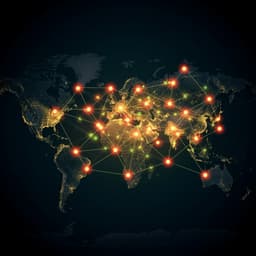
Political Science
The 1995–2018 global evolution of the network of amicable and hostile relations among nation-states
O. Askarisichani, A. K. Singh, et al.
This research, conducted by Omid Askarisichani, Ambuj K. Singh, Francesco Bullo, and Noah E. Friedkin, delves into the intricate evolution of international relationships from 1995 to 2018. Utilizing the ICEWS dataset, the authors uncover how positive and negative interactions between countries conform to Structural Balance Theory, while also introducing a new probabilistic micro-dynamic model that traces shifts in global opinions.
~3 min • Beginner • English
Related Publications
Explore these studies to deepen your understanding of the subject.







